
Lane Motor Museum, Nashville
Some Italian & German Cars ++ Plus ++ Some British
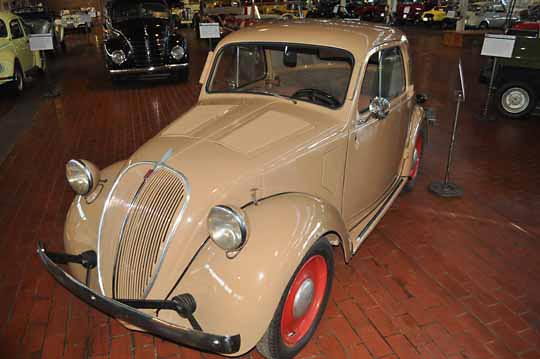
1936 Fiat Topolino 500A
Fiat began in 1899 when Giovanni Agnelli led a group of investors to form the Societa Aninima Fabbrica Italianan di Automobili - Torino. FIAT (now Fiat) is now a huge multinational conglomerate and has been building cars for over 100 years. Some consider the most famous Fiat of all to be the 500 “Topolino.” Launched in 1936, the new “baby” Fiat was the smallest mass-produced car of its time. With two seats, a 13 bhp 569cc engine and a 6-1/2 foot wheel-base, it was designed to bring motoring to the masses. It was a great success, and this first of the 500s was revised twice and remained in production until 1955, with over 122,000 being produced. Although the Fiat 500 has changed over the years, Fiat has produced a 500-type small urban car, in name or intent, almost continuously since 1936.
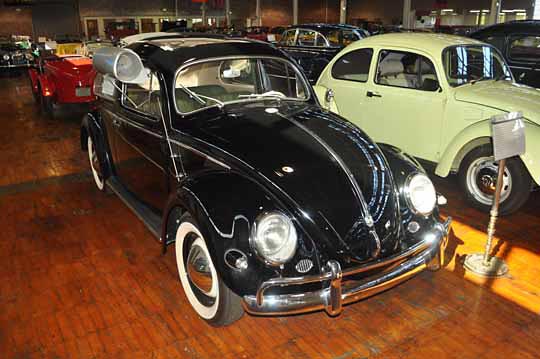
1956 Volkswagen Beetle
The Volkswagen Beetle is a car we are all familiar with. More than 20 million were sold. While the name “Porsche” is associated with expensive cars, Ferdinand Porsche had a life-long interest in a small car that an average working person could afford. Porsche's prototypes came to the attention of the newly-elected chancellor of Germany — Adolph Hitler and on June 22, 1934, Porsche signed a contract for the development of the “people's car.” He agreed with Hitler's request that the car should transport two adults and three children, cruise at 62 mph, and achieve 40 mpg of gas. No citizen took delivery of the Beetle before WWII started but after the war production increased rapidly. By the end of 1946, 100 cars were produced a month. Beetles were exported to the U.S. in 1949 and the U.S. soon became the leading export market. While production ceased in Germany in 1978, Volkswagen were produced in Mexico until 2003. The “new” Beetle, a front-wheel drive, water-cooled model based on the Golf chassis, was introduced in 1998.
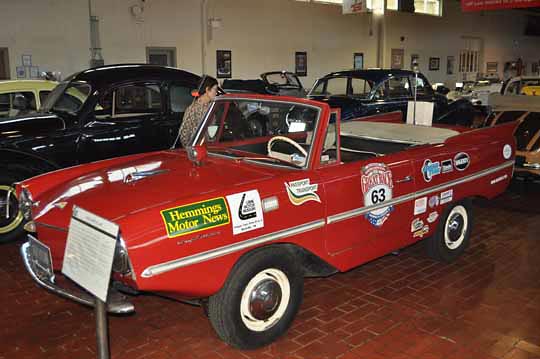
1964 Amphicar
This amphibious car was designed by Hans Trippel. It has a uni-body steel two-door cabriolet body with electrically welded joints and is powered by a 1147cc Triumph Herald engine mounted at the rear and driving the rear wheels. Two propellers are activated for propulsion when the car is in the water. Top speed is about 6-1/2 knots (7 mph) in the water and 68 mph on land. The front wheels are used as rudimentary rudders for steering in the water. Of 3,878 made, 3,046 were imported to the U.S. and the rest were sold around Europe. The amphicar was the most successful amphibious car ever produced and has the highest tail tins of any production car, one inch higher than a ‘59 Cadillac!
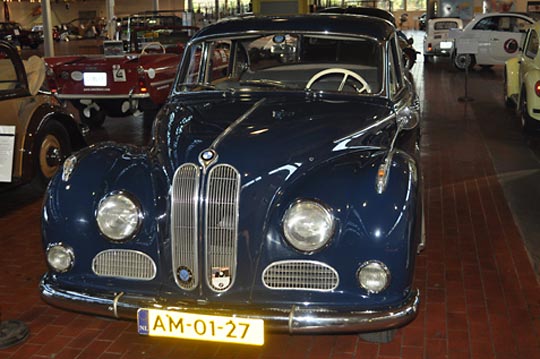
1963 BMW 3200S
The 500-series cars may not have been BMW's most glamorous products, but these big and sturdy middle-class machines were the mainstay of the company's car division from 1951 until 1964. They were nicknamed Barockergel (Baroque Angels) because their bulbous and slowing lines reminded people of the carved wooden figures in South German and Austrian churches of the Baroque period. In 1961, the BMW 3200 was introduced. It was the successor to the 502. Aside from having more power (160 hp), there was little difference in the 502 and the 3200 models. 1,323 models of this luxury, four-door saloon were produced. This car was rallied on “Les Chateaux de France” down the Rhone River Valley region in October 2005 by the Lanes.
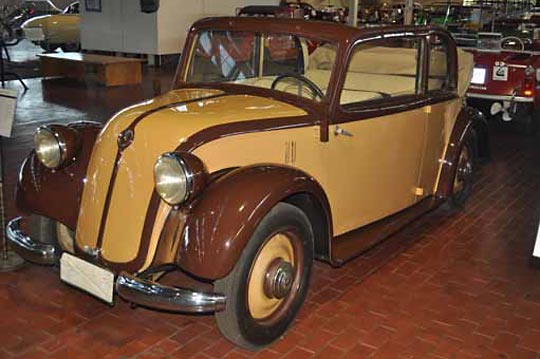
1935 Mercedes 130H
One of the most famous names in automotive history, Mercedes can trace its roots back to 1889 and the first motorcar. By 1908, they were well established as the leading make of European cars. America was the best export market for Mercedes cars as they were favored by many high society millionaires. Like other forward thinking European automotive manufacturers. The company focused on the idea of a “people's car” during the years after World War I. The130H is Daimler-Benz's attempt at a rear engine car. H represents “Heck” the German word for “Rear.” This two-door car was offered as a hardtop or cabriolet. The frame is a forked backbone design and the usual Mercedes swing axle suspension was used. While it was not a commercial success, its ideas evolved into other cars, such as the Volkswagen Beetle.
Ah! The British Roadsters
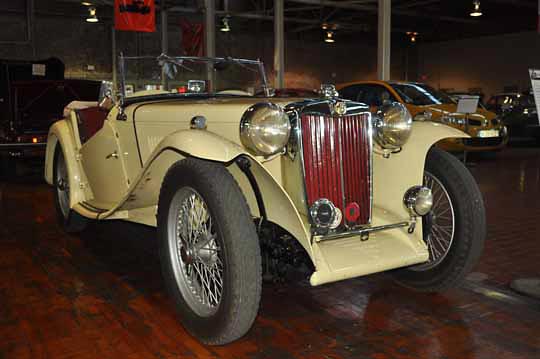
1949 MG TC Midget Roadster
In 1936, the MG (which stands for Morris Garages) Car Company began production of the T-series. The MG TA Midget and the MG TB were produced pre-WWII. After the war, MG was back in production quicker than most British companies. The first MG TC came off the line in 1945. The TC Midget is very similar in appearance to the TB — with a folding windscreen (windshield), cut-away doors, swept front and rear fenders and a rear mounted spare wheel. The body is four inches wider and the sliding trunnion suspension was replaced by cibvebtuibak shackled springs. 2000 of these cars came to the U.S. and in terms of both mechanical specification and appearance, the MG TC Midget found a ready market in the U.S., where they were to generate new enthusiasm for sports cars and motor sport.
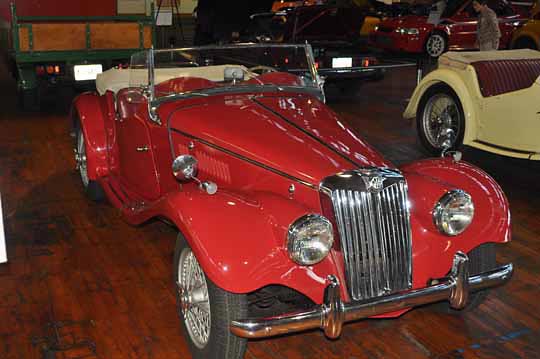
1954 MG TF-1250
Gene Lane's (Lane Motor Museum) passion for MGs started during his service in the Army. In 1954, Gene Lane was stationed in Germany and purchased a new 1954 MG TF that looked just like the car you see here. Gene drove the car in Germany for a year and when he left the Army in 1955, he had the car shipped to his hometown of Romeo, Michigan. He got Married and began a family and the TF proved to be impractical and was sold. Never losing his passion for the TF, in 1967, he purchased this TF. In the early 1970s this car was restored. It has been on loan to the museum since 2003.
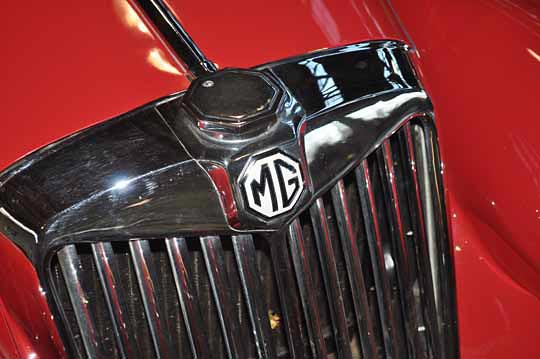
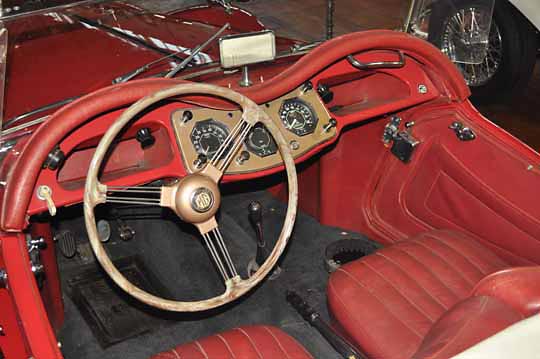
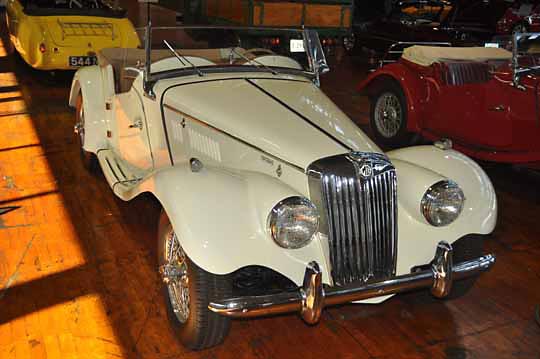
1955 MG TF-1500
The MG T Series was the sports car line that was the bread and butter of the MG Company from 1936 to 1955. The T Series started with the MG TA from 1936 to 1939. The TB was introduced in 1939 and only 379 were produced before WWII began. T Series production resumed in 1946 with the MG TC from 1946 to 1949. In 1950, the TD was introduced and was the first T Series vehicle with a major improvement — it featured independent coil front suspension. By the mid 50s the T Series was becoming dated (it had been in production nearly 20 years) and the TF was the last variation of the T Series produced from 1954 to 1955. In 1956, MG introduced the MGA, which was a totally redesigned sports car with an aerodynamic, fully-integrated body, unlike the T Series which always had external fenders.
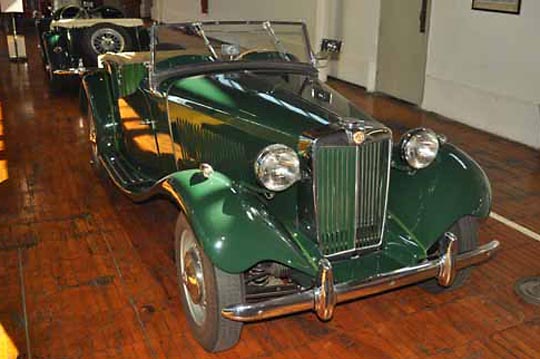
1951 MG TD
By 1949. the MG TC had become outdated. When it was originally released, it was a slight improvement of the TB version that was designed prior to World War II. MG Car Company answered the call for a more modern car by introducing the TD in 1950. It was a smashing success with almost 30,000 produced in just three years. The handling was much improved from the earlier TC as it offered independent double A-arms and coil springs in the front. The brakes were also significantly better which transformed the TD into a reasonable sports car, making the TC feel as outdated as it was. The TD you see here was restored by a Museum member for his father as a Father's Day present. This car is meticulously correct restoration and stands as a time capsule of what a TD would have looked like over fifty years ago when it was new.
All the above stories and descriptions were from the Museum. I will depart from the Museum to relate my experiences with the MGs. While we lived in Las Vegas I had a 1969 MGB. It was in fair shape but needed work. I overhauled the engine which was the first time I had ever worked on an engine larger than that on a motor scooter and lawn mower. I also totally restored the body I sold it when we were sent to Japan in 1975. We considered taking it to Japan and even had Bill, Kim and David see if they could get into the back jump seat with Mieko and I in the front seats. Just as Gene found, it was impractical for 5 people!
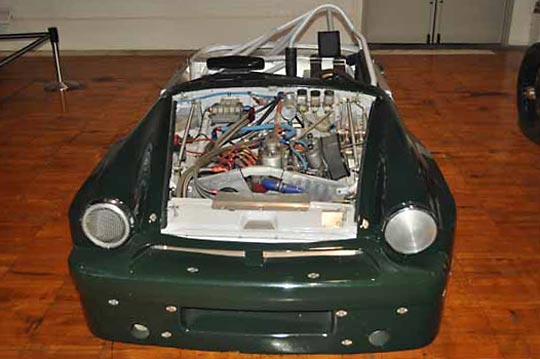
1970 MG Midget (Race Car)
The MG Midget is essentially the same car as the Austin Healey Sprite. This midget has been modified for racing in S.C.C.A. "F" production cars. Previous F production cars had the exhaust running under the car which allowed for a ground clearance of 4 to 5 inches. In the late 1980s, The standard for future cars was changed by running the exhaust pipe through the drive shaft tunnel, thus allowing for a ground clearance of 1.75 inches. This is one example of the many advanced innovation on this car. The front motor mount is a sandwiched aluminum plate tying together the steering rack and the front suspension. The engine is dry sumped. After completion, the car was so light it needed 150 pounds of ballast to make the minimum weight requirement. This car is retired from racing and has been beautifully restored to perfect running condition.
A car or two from France
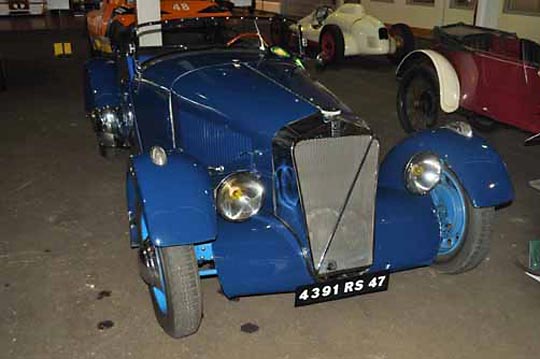
1938 Georges Irat
The first appearance of the Georges Irat name was in 1914, but there is no record of car production until 1921. Apart from the bodies, the whole of the car was made at the factory in France. Output of various models never exceeded 200 cars per year up to the end of the 1920s.
Irat became interested in American engines and built a new factory to produce larger cars powered by straight-8 Lycoming engines. Poor sales of smaller models coupled with the big straight-8s brought Irat close to financial ruin. 1935 saw a revival, thanks to the car you see here. Engine makers Godefroy and Lévécque needed a new customer for their Ruby engines, as many small-car manufacturer had gone out of business. Irat, in a new partnership with Godefroy and Lévécque, produced this small sports car powered by an 1100cc Ruby engine driving the front wheels. The 6CV Georges Irat was more sporting in looks than in performance. It was offered as an open 2-seater and it became quite popular.
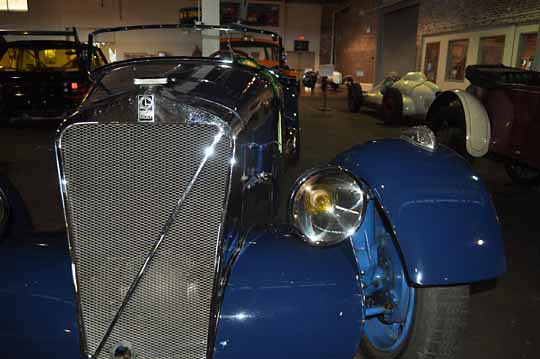
Although Irat built cars, trucks, and diesel engines at four different plants — three in France, one in Morocco — between 1921 and 1953, this model lasted only as long as the ready supply of Ruby engines lasted — until 1939. This car sported a 3 speed manual transmission and had a top speed 70 mph! There were 1,500 produced.
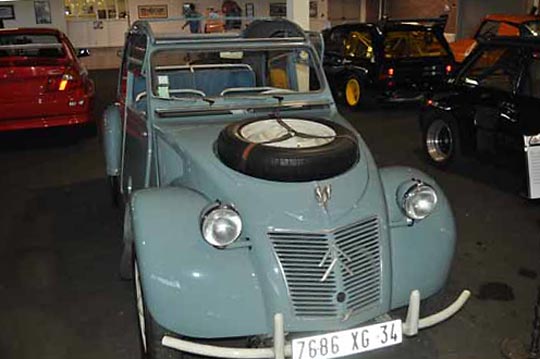
1962 Citroën 2CV 4x4 Sahara
Citroën wanted to create a four wheel drive car for use in Africa to take the rugged terrain encountered during oil and mineral exploration. Instead of going with a standard configuration, Citroën mounted one engine in the front and another in the rear to create four wheel drive. Separate ignition switches control the engines. On the road, it can be driven with both engines running, giving a top speed of 60 mph. You can also drive on the front engine only but the top speed is reduced to 3 mph. Because of its light weight (1600 pounds) and 50/50 weight distribution, it has great off-road capabilities. Note the car has two gas tanks — one under each front seat. The 2CVs were made in many variations and the Sahara is one of the rarest models. Only 694 Sahara's were made and only about 100 are thought to survive.
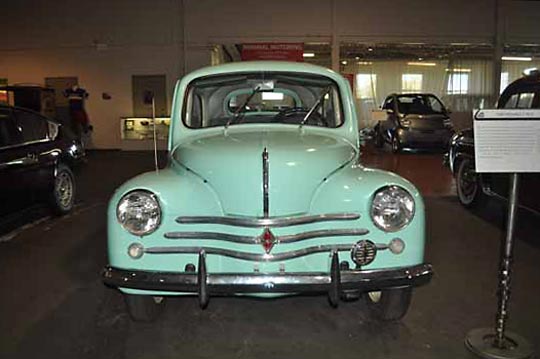
1960 Renault 4CV
In 1898, Alfred Renault, choosing not to go into the family button business, built a small car in a workshop in the garden of his family's home. The “Type A” was shown at the 1899 Paris Salon. The 4CV symbolizes Renault's rebirth following massive bomb damage during World War II. Following development work conducted under cover during the German occupation, the 4CV was finally unveiled to the public at the first post-war Paris Motor Show. It was an immediate success, as it became the symbol of new-found liberty after five years of bitter conflict. The 4CV, launched in 1946, was the first French car to top production of a million units and is one of the smallest 4-door saloons ever made. Its dimensions are: Length: 10'-8", Width 4'-6", Height 4'-4", Weight 1,232 pounds. Number produced: 1,105,547.
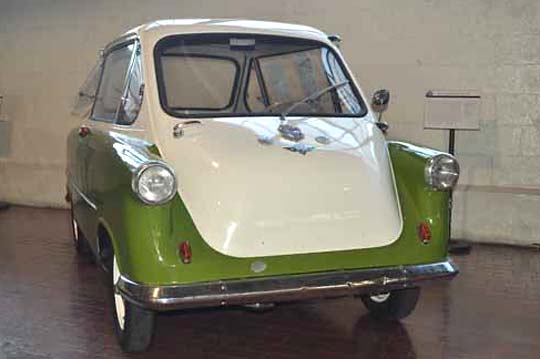
1957 Zündapp Janus 250
Zündapp is one of the best known makes of German motorcycles. The company's first car was built in 1932 as Ferdinand Porsche's design for a “people's car.” They concentrated on motorcycles until 1954 when four initial designs were evaluated for an unusual microcar. Claudius Domier, well known for his “push-pull” aircraft designs, was selected to design the new car for Zündapp. As seen here, this car has two doors and seats four people — although in a very unusual way. Doors are located at the front and rear with passengers facing the front or rear. The engine is mounted between the two rows of seats which can be reconfigured to provide a sleeping space for two people. This design simplified building as it called for fewer pressings — the doors are identical. The name “Janus” was appropriately chosen after the Roman god with two faces — one looking forward, the other looking back. Options for the Janus included a sun visor for both directions, sunroof, heater and two-tone paint.
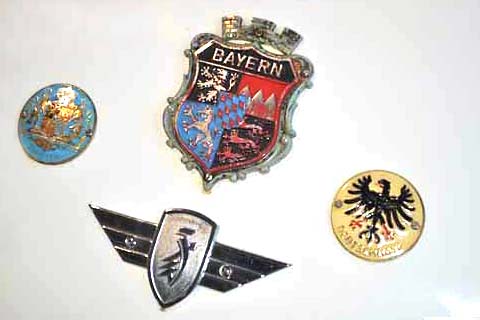
Back to the first page cars.
Let's go on to a second page for some really “mini-sized” cars.
Onward to page three for a really UGLY car & some very cool.
Onward to page four for more on Tatra of Czechoslovakia.